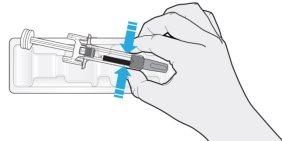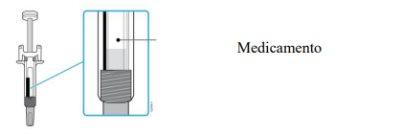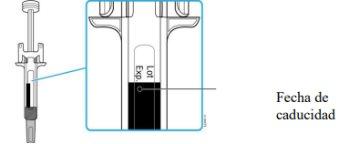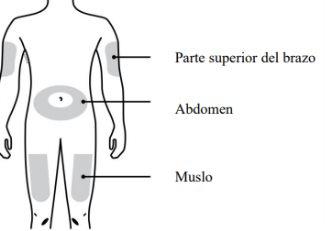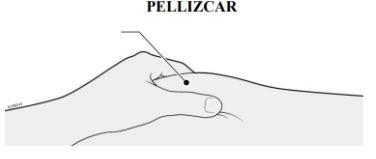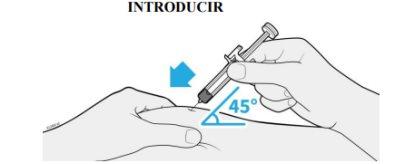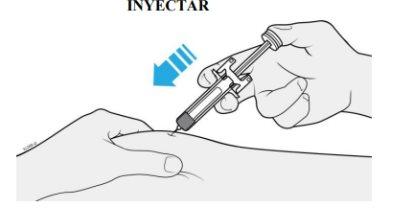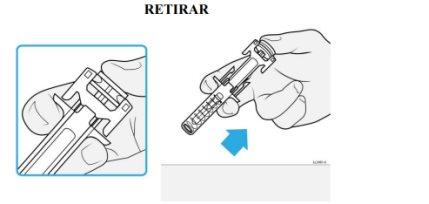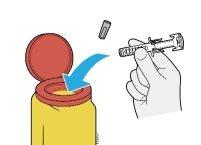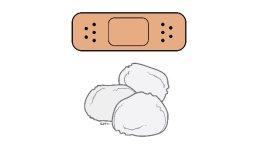
Инструкция по применению ВЕЗЕНЛА 90 мг РАСТВОР ДЛЯ ИНЪЕКЦИЙ В ПРЕДНАПОЛНЕННОМ ШПРИЦЕ
Введение
Прошпект: информация для пациента
ВЕЗЕНЛА 45мг раствор для инъекции в предварительно заполненном шприце
ВЕЗЕНЛА 90мг раствор для инъекции в предварительно заполненном шприце
устекинумаб
Это лекарство подлежит дополнительному наблюдению, что ускорит обнаружение новой информации о его безопасности. Вы можете внести свой вклад, сообщая о нежелательных реакциях, которые у вас могут возникнуть. В конце раздела 4 содержится информация о том, как сообщать о этих нежелательных реакциях.
Прочитайте внимательно весь прошпект перед началом использования этого лекарства, поскольку он содержит важную информацию для вас.
Этот прошпект составлен для человека, который использует лекарство. Если вы являетесь родителем или опекуном ребенка, которому будет введен ВЕЗЕНЛА, пожалуйста, внимательно прочитайте эту информацию.
- Сохраните этот прошпект, поскольку вам может потребоваться прочитать его снова.
- Если у вас есть какие-либо вопросы, проконсультируйтесь с вашим врачом или фармацевтом.
- Это лекарство назначено только вам, и не следует давать его другим людям, даже если они имеют те же симптомы, что и вы, поскольку оно может нанести им вред.
- Если вы испытываете нежелательные реакции, проконсультируйтесь с вашим врачом или фармацевтом, даже если это нежелательные реакции, которые не указаны в этом прошпекте. См. раздел 4.
Содержание прошпекта
- Что такое ВЕЗЕНЛА и для чего он используется
- Что вам нужно знать перед началом использования ВЕЗЕНЛА
- Как использовать ВЕЗЕНЛА
- Возможные нежелательные реакции
- Хранение ВЕЗЕНЛА
- Содержание упаковки и дополнительная информация
1. Что такое ВЕЗЕНЛА и для чего он используется
Что такое ВЕЗЕНЛА
ВЕЗЕНЛА содержит активное вещество "устекинумаб", моноклональное антитело. Моноклональные антитела - это белки, которые идентифицируют и специфически связываются с определенными белками организма.
ВЕЗЕНЛА относится к группе лекарств, называемых "иммунодепрессанты". Эти лекарства действуют путем ослабления части иммунной системы.
Для чего используется ВЕЗЕНЛА
ВЕЗЕНЛА используется для лечения следующих воспалительных заболеваний:
- Псориаз в виде бляшек - у взрослых и детей от 6 лет и старше
- Псориатический артрит - у взрослых
- Болезнь Крона средней и тяжелой степени - у взрослых
Псориаз в виде бляшек
Псориаз в виде бляшек - это заболевание кожи, которое вызывает воспаление, поражающее кожу и ногти. ВЕЗЕНЛА снижает воспаление и другие признаки заболевания.
ВЕЗЕНЛА используется у взрослых с псориазом в виде бляшек средней и тяжелой степени, которые не могут использовать циклоспорин, метотрексат или фототерапию, или когда эти методы лечения не эффективны.
ВЕЗЕНЛА используется у детей и подростков от 6 лет и старше с псориазом в виде бляшек средней и тяжелой степени, которые не могут переносить фототерапию или другие системные методы лечения, или когда эти методы лечения не эффективны.
Псориатический артрит
Псориатический артрит - это воспалительное заболевание суставов, которое обычно сопровождается псориазом. Если у вас активный псориатический артрит, сначала вам будут назначены другие лекарства. Если вы не хорошо реагируете на эти лекарства, вам может быть назначен ВЕЗЕНЛА для:
- Снижения признаков и симптомов вашего заболевания.
- Улучшения вашей физической функции.
- Снижения повреждения суставов.
Болезнь Крона
Болезнь Крона - это воспалительное заболевание кишечника. Если у вас болезнь Крона, сначала вам будут назначены другие лекарства. Если вы не хорошо реагируете на эти лекарства или не можете их переносить, вам может быть назначен ВЕЗЕНЛА для снижения признаков и симптомов вашего заболевания.
2. Что вам нужно знать перед началом использования ВЕЗЕНЛА
Не используйте ВЕЗЕНЛА
- Если вы аллергичны к устекинумабуили любому другому компоненту этого лекарства (указанному в разделе 6).
- Если у вас есть активная инфекция, которую ваш врач считает важной.
Если вы не уверены, что какой-либо из этих пунктов относится к вам, проконсультируйтесь с вашим врачом или фармацевтом перед использованием ВЕЗЕНЛА.
Предостережения и меры предосторожности
Проконсультируйтесь с вашим врачом или фармацевтом перед началом использования ВЕЗЕНЛА. Ваш врач проверит ваше состояние перед каждым лечением. Убедитесь, что вы сообщите вашему врачу о любом заболевании, которое у вас есть, перед каждым лечением. Ваш врач также спросит, были ли вы недавно рядом с кем-то, кто мог иметь туберкулез. Ваш врач осмотрит вас и проведет тест на обнаружение туберкулеза перед использованием ВЕЗЕНЛА. Если ваш врач считает, что вы находитесь в группе риска туберкулеза, он может назначить вам лекарства для лечения.
Обратите внимание на тяжелые нежелательные реакции
ВЕЗЕНЛА может вызывать тяжелые нежелательные реакции, включая аллергические реакции и инфекции. Вы должны обратить внимание на определенные признаки заболевания, пока используете ВЕЗЕНЛА. См. полный список этих нежелательных реакций в разделе "Тяжелые нежелательные реакции" раздела 4.
Прежде чем использовать ВЕЗЕНЛА, сообщите вашему врачу:
- Если вы когда-либо имели аллергическую реакцию на ВЕЗЕНЛА.Проконсультируйтесь с вашим врачом, если вы не уверены.
- Если вы когда-либо имели какой-либо вид рака– это потому, что иммунодепрессанты типа ВЕЗЕНЛА ослабляют часть иммунной системы. Это может увеличить риск развития рака.
- Если вы получали лечение псориаза другими биологическими препаратами (лекарством, произведенным из биологического источника и обычно вводимым путем инъекции)– риск развития рака может быть выше.
- Если у вас была недавно инфекция.
- Если у вас есть новая рана или изменение ранв области псориаза или на здоровой коже.
- Если вы принимаете любое другое лечение псориаза и/или псориатического артрита– такое как любое другое иммунодепрессивное средство или фототерапия (когда ваш организм подвергается воздействию определенного типа ультрафиолетового света (УФ)). Эти методы лечения также могут ослаблять часть иммунной системы. Не было проведено изучение использования этих методов лечения в сочетании с ВЕЗЕНЛА. Однако возможно, что это может увеличить вероятность развития заболеваний, связанных с ослабленной иммунной системой.
- Если вы получали инъекции для лечения аллергии– неизвестно, может ли ВЕЗЕНЛА повлиять на эти методы лечения.
- Если вам 65 лет или более– вы имеете больше шансов приобрести инфекции.
Если вы не уверены, что какой-либо из этих пунктов относится к вам, проконсультируйтесь с вашим врачом или фармацевтом перед использованием ВЕЗЕНЛА.
Некоторые пациенты испытывали реакции, подобные системной красной волчанке, во время лечения устекинумабом, включая кожную красную волчанку или подобное состояние. Проконсультируйтесь с вашим врачом немедленно, если вы испытываете красную, возвышенную и чешуйчатую сыпь, иногда с более темной каймой, в областях кожи, подверженных воздействию солнца, или если они сопровождаются болями в суставах.
Инфаркты миокарда и инсульты
В одном из исследований, проведенных на пациентах с псориазом, леченных устекинумабом, были обнаружены инфаркты миокарда и инсульты. Ваш врач будет периодически проверять ваши факторы риска сердечно-сосудистых заболеваний и инсультов, чтобы убедиться, что они лечатся должным образом. Обратитесь за медицинской помощью немедленно, если у вас есть боль в груди, слабость или необычное ощущение на одной стороне тела, паралич лица или аномалии речи или зрения.
Дети и подростки
Не рекомендуется использовать ВЕЗЕНЛА у детей младше 6 лет с псориазом и у детей младше 18 лет с псориатическим артритом или болезнью Крона, поскольку это не было изучено в этой возрастной группе.
Использование ВЕЗЕНЛА с другими лекарствами, вакцинами
Сообщите вашему врачу или фармацевту:
- Если вы используете, недавно использовали или можете использовать другие лекарства.
- Если вы были недавно вакцинированы или собираетесь получить вакцину. Не следует вводить определенные типы вакцин (живые вакцины) во время использования ВЕЗЕНЛА.
- Если вы получали ВЕЗЕНЛА во время беременности, сообщите врачу вашего ребенка о вашем лечении ВЕЗЕНЛА перед тем, как ребенок получит любую вакцину, включая живые вакцины, такие как вакцина БЦЖ (используемая для предотвращения туберкулеза). Не рекомендуется использовать живые вакцины для вашего ребенка в течение первых 12 месяцев после рождения, если вы получали ВЕЗЕНЛА во время беременности, unless врач вашего ребенка рекомендует иное.
Беременность и лактация
- Если вы беременны, думаете, что могли быть беременны или планируете стать беременной, проконсультируйтесь с вашим врачом перед использованием этого лекарства.
- Не было обнаружено повышенного риска врожденных дефектов у детей, подвергшихся воздействию ВЕЗЕНЛА в утробе. Однако опыт использования ВЕЗЕНЛА у беременных женщин ограничен. Поэтому предпочтительно избегать использования ВЕЗЕНЛА во время беременности.
- Если вы являетесь женщиной детородного возраста, вам рекомендуется избегать беременности и использовать адекватные меры контрацепции во время использования ВЕЗЕНЛА и в течение как минимум 15 недель после последнего лечения ВЕЗЕНЛА.
- ВЕЗЕНЛА может проникать через плаценту к плоду. Если вы получали ВЕЗЕНЛА во время беременности, ваш ребенок может иметь повышенный риск заразиться инфекцией.
- Важно сообщить врачам вашего ребенка и другим медицинским работникам, если вы получали ВЕЗЕНЛА во время беременности, прежде чем ребенок получит любую вакцину. Не рекомендуется использовать живые вакцины, такие как вакцина БЦЖ (используемая для предотвращения туберкулеза), для вашего ребенка в течение первых 12 месяцев после рождения, если вы получали ВЕЗЕНЛА во время беременности, unless врач вашего ребенка рекомендует иное.
- Устекинумаб может выделяться в грудное молоко в очень небольших количествах. Сообщите вашему врачу, если вы кормите грудью или планируете это делать. Вы и ваш врач решите, следует ли вам кормить грудью или использовать ВЕЗЕНЛА. Не делайте этого одновременно.
Вождение и использование машин
Влияние ВЕЗЕНЛА на способность управлять транспортными средствами и работать с машинами является незначительным или отсутствует.
3. Как использовать ВЕЗЕНЛА
ВЕЗЕНЛА должен использоваться под руководством и наблюдением врача с опытом лечения заболеваний, для которых показан ВЕЗЕНЛА.
Всегда следуйте точно инструкциям по введению этого лекарства, указанным вашим врачом. В случае сомнений проконсультируйтесь с вашим врачом. Спросите вашего врача, когда вам следует сделать инъекции и о последующих осмотрах.
Какая доза ВЕЗЕНЛА вводится
Ваш врач решит, какая доза ВЕЗЕНЛА вам необходима, и как долго будет длиться лечение.
Взрослые от 18 лет и старше
Псориаз или псориатический артрит
- Рекомендуемая начальная доза составляет 45 мг ВЕЗЕНЛА. Пациенты, вес которых превышает 100 килограммов (кг), могут начать с дозы 90 мг вместо 45 мг.
- После начальной дозы вы получите следующую дозу через 4 недели, а затем каждые 12 недель. Последующие дозы обычно такие же, как начальная доза.
Болезнь Крона
- Во время лечения врач введет вам первую дозу примерно 6 мг/кг ВЕЗЕНЛА путем внутривенного введения в вену руки (инфузии). После начальной дозы вы получите следующую дозу 90 мг ВЕЗЕНЛА через 8 недель, а затем каждые 12 недель путем подкожной инъекции ("подкожно").
- У некоторых пациентов после первой подкожной инъекции вводятся 90 мг ВЕЗЕНЛА каждые 8 недель. Ваш врач решит, когда вам следует получить следующую дозу.
Дети и подростки от 6 лет и старше
Псориаз
- Врач укажет вам правильную дозу, включая количество (объем) ВЕЗЕНЛА, которое необходимо ввести для получения правильной дозы. Правильная доза для вас будет зависеть от вашего веса в момент введения каждой дозы.
- Доступен флакон с 45 мг для детей, которым необходимо вводить меньшее количество от общей дозы 45 мг.
- Если ваш вес меньше 60 кг, рекомендуемая доза составляет 0,75 мг ВЕЗЕНЛА на килограмм веса.
- Если ваш вес составляет от 60 кг до 100 кг, рекомендуемая доза составляет 45 мг ВЕЗЕНЛА.
- Если ваш вес превышает 100 кг, рекомендуемая доза составляет 90 мг ВЕЗЕНЛА.
- После начальной дозы вы получите следующую дозу через 4 недели, а затем каждые 12 недель.
Как вводится ВЕЗЕНЛА
- ВЕЗЕНЛА вводится путем подкожной инъекции ("подкожно"). В начале вашего лечения медицинский персонал или медсестра могут вводить вам ВЕЗЕНЛА.
- Однако вы и ваш врач можете решить, что вы будете вводить ВЕЗЕНЛА самостоятельно. В этом случае вы будете обучены, как вводить ВЕЗЕНЛА самостоятельно.
- Для инструкций по введению ВЕЗЕНЛА см. "Инструкции по применению" в конце этого прошпекта.
Проконсультируйтесь с вашим врачом, если у вас есть какие-либо вопросы о том, как вводить ВЕЗЕНЛА самостоятельно.
Если вы использовали больше ВЕЗЕНЛА, чем следует
Если вы использовали или вам было введено слишком много ВЕЗЕНЛА, немедленно проконсультируйтесь с вашим врачом или фармацевтом. Всегда носите с собой упаковку лекарства, даже если она пуста.
Если вы пропустили использование ВЕЗЕНЛА
Если вы пропустили дозу, проконсультируйтесь с вашим врачом или фармацевтом. Не принимайте двойную дозу, чтобы компенсировать пропущенные дозы.
Если вы прекратили лечение ВЕЗЕНЛА
Прекращение использования ВЕЗЕНЛА не является опасным. Однако, если вы прекратите его использование, ваши симптомы могут снова появиться.
Если у вас есть какие-либо другие вопросы о использовании этого лекарства, проконсультируйтесь с вашим врачом или фармацевтом.
4. Возможные побочные эффекты
Как и все лекарства, это лекарство может вызывать побочные эффекты, хотя не все люди их испытывают.
Тяжелые побочные эффекты
Некоторые пациенты могут испытывать тяжелые побочные эффекты, которые могут потребовать срочного лечения.
Аллергические реакции – они могут потребовать срочного лечения. Свяжитесь с вашим врачом или получите срочную медицинскую помощь немедленно, если вы заметите любой из следующих признаков.
- Тяжелые аллергические реакции ("анафилаксия") редки в популяции, использующей устекинумаб (могут поражать до 1 из 1000 человек). Признаки включают:
- затруднение дыхания и глотания
- понижение артериального давления, которое может вызвать головокружение или легкие головные боли
- отек лица, губ, рта или горла.
- Общие признаки аллергической реакции включают кожную сыпь и крапивницу (эти могут поражать до 1 из 100 человек).
В редких случаях были зарегистрированы аллергические реакции на уровне легких и воспаление легких у пациентов, леченных устекинумабом. Сообщите вашему врачу немедленно, если у вас есть симптомы, такие как кашель, затруднение дыхания и лихорадка.
Если у вас есть тяжелая аллергическая реакция, ваш врач может решить, что вы не должны использовать ВЕЗЕНЛУ снова.
Инфекции – они могут потребовать срочного лечения. Свяжитесь с вашим врачом немедленно, если вы заметите любой из этих признаков.
- Инфекции носа или горла и обычная простуда часто встречаются (могут поражать до 1 из 10 человек)
- Инфекции легких редки (могут поражать до 1 из 100 человек)
- Воспаление тканей, расположенных под кожей ("целлюлит") редко (может поражать до 1 из 100 человек)
- Герпес (тип болезненной сыпи с пузырями) редок (может поражать до 1 из 100 человек)
ВЕЗЕНЛА может повлиять на вашу способность бороться с инфекциями. Некоторые из них могут быть тяжелыми и вызваны вирусами, грибами, бактериями (включая туберкулез) или паразитами, и среди них есть инфекции, которые в основном поражают людей с ослабленной иммунной системой (оппортунистические инфекции). Были зарегистрированы оппортунистические инфекции мозга (энцефалит, менингит), легких и глаз у пациентов, получающих лечение устекинумабом.
Вы должны следить за признаками инфекции, пока используете ВЕЗЕНЛУ. Эти признаки включают:
- лихорадку, симптомы гриппа, ночные поты, потерю веса
- чувство усталости или затруднения дыхания; кашель, который не проходит
- кожу, горячую, красную и болезненную, или наличие болезненной сыпи с пузырями
- зуд при мочеиспускании
- диарею
- ухудшение зрения или потерю зрения
- головную боль, напряжение шеи, фоточувствительность, тошноту или путаницу.
Свяжитесь с вашим врачом немедленно, если вы заметите любой из этих признаков инфекции, поскольку они могут быть признаками инфекций, таких как инфекции легких, кожные инфекции, герпес или оппортунистические инфекции, которые могут иметь тяжелые осложнения. Также сообщите вашему врачу, если у вас есть любой тип инфекции, который не проходит или повторяется. Ваш врач может решить, что вы не должны использовать ВЕЗЕНЛУ, пока инфекция не пройдет. Также свяжитесь с вашим врачом, если у вас есть любой открытый порез или язва, которая может быть инфицирована.
Отслоение кожи – увеличение покраснения и отслоение кожи на большой поверхности тела могут быть симптомами эритродермической псориазы или эксфолиативной дерматита, которые являются тяжелыми кожными расстройствами. Если вы заметите любой из этих симптомов, вы должны сообщить об этом вашему врачу немедленно.
Другие побочные эффекты
Частые побочные эффекты(могут поражать до 1 из 10 человек):
- Диарея
- Тошнота
- Рвота
- Чувство усталости
- Чувство головокружения
- Головная боль
- Зуд ("прурито")
- Боль в спине, мышцах или суставах
- Боль в горле
- Покраснение и боль в месте инъекции
- Синусит
Редкие побочные эффекты(могут поражать до 1 из 100 человек):
- Дентальные инфекции
- Вагинальные инфекции, вызванные дрожжами
- Депрессия
- Закупорка или конгестия носа
- Кровотечение, синяки, уплотнение, отек и зуд в месте инъекции
- Чувство слабости
- Птоз и атрофия мышц на одной стороне лица ("фациальный паралич" или "Белл паралич"), который обычно временный
- Изменение псориаза с покраснением и новой сыпью на коже, иногда сопровождаемой лихорадкой (пустулезная псориаз)
- Отслоение кожи (эксфолиация кожи)
- Акне
Очень редкие побочные эффекты(могут поражать до 1 из 1000 человек):
- Покраснение и отслоение кожи на большой поверхности тела, которое может вызвать зуд или боль (эксфолиативный дерматит). Могут развиваться подобные симптомы, такие как изменение псориаза (эритродермическая псориаз)
- Воспаление мелких кровеносных сосудов, которое может вызвать сыпь на коже с мелкими красными или фиолетовыми бугорками, лихорадку или боль в суставах (васкулит)
Очень редкие побочные эффекты(могут поражать до 1 из 10 000 человек):
- Пузыри на коже, которые могут быть красными и вызывать зуд и боль (пузырчатый пенфигус)
- Кожный лупус или лупусоподобный синдром (красная, возвышенная и чешуйчатая сыпь на коже, открытой для солнца, возможно сопровождаемая болью в суставах).
Сообщение о побочных эффектах
Если вы испытываете любой побочный эффект, проконсультируйтесь с вашим врачом или фармацевтом, даже если это возможные побочные эффекты, которые не указаны в этом описании. Вы также можете сообщить о них напрямую через национальную систему уведомления, указанную в Приложении V. Сообщая о побочных эффектах, вы можете способствовать предоставлению более полной информации о безопасности этого лекарства.
5. Хранение ВЕЗЕНЛЫ
- Храните это лекарство в недоступном для детей месте.
- Храните в холодильнике (при температуре между 2 °C и 8 °C). Не замораживайте.
- Храните предварительно заполненную шприц-инъектор в наружной упаковке, чтобы защитить его от света.
- Если необходимо, отдельные предварительно заполненные шприц-инъекторы ВЕЗЕНЛЫ также можно хранить при комнатной температуре до 30 °C в течение одного периода времени до 30 дней в оригинальной упаковке, чтобы защитить их от света. Запишите дату, когда предварительно заполненный шприц-инъектор был впервые удален из холодильника, и дату, когда он должен быть утилизирован. Дата утилизации не должна превышать исходную дату истечения срока годности, указанную на упаковке. Как только шприц-инъектор был хранен при комнатной температуре (до 30 °C), его нельзя хранить снова в холодильнике. Утилизируйте шприц-инъектор, если он не используется в течение 30 дней хранения при комнатной температуре или до даты истечения срока годности, в зависимости от того, что наступит раньше.
- Не трясите предварительно заполненные шприц-инъекторы ВЕЗЕНЛЫ. Продолжительное интенсивное встряхивание может повредить продукт.
Не используйте это лекарство:
- После даты истечения срока годности, указанной на этикетке и упаковке после "CAD" или "EXP". Дата истечения срока годности – последний день месяца, указанного.
- Если жидкость изменила цвет, стала мутной или содержит посторонние частицы, плавающие в ней (см. раздел 6 "Вид ВЕЗЕНЛЫ и содержимое упаковки").
- Если вы знаете или считаете, что лекарство было подвергнуто воздействию экстремальных температур (например, случайного нагрева или замораживания).
- Если продукт был интенсивно встряхнут.
ВЕЗЕНЛА предназначена для одноразового использования. Вы должны утилизировать неиспользованный продукт, оставшийся в шприц-инъекторе. Лекарства не должны выбрасываться в канализацию или в мусор. Спросите вашего фармацевта, как утилизировать упаковку и лекарства, которые вам больше не нужны. Таким образом, вы поможете защитить окружающую среду.
6. Содержимое упаковки и дополнительная информация
Состав ВЕЗЕНЛА
- Активное вещество - устекинумаб. Каждая предварительно заполненная шприц-инъектор содержит 45 мг устекинумаба в 0,5 мл или 90 мг устекинумаба в 1 мл.
- Другие компоненты - L-гистидин, моногидрат хлорида L-гистидина, полисорбат 80, сахароза и вода для инъекционных препаратов.
Внешний вид ВЕЗЕНЛА и содержимое упаковки
ВЕЗЕНЛА - это прозрачный или опалесцирующий инъекционный раствор от бесцветного до светло-желтого цвета. Он представлен в упаковке, содержащей 1 предварительно заполненный шприц-инъектор объемом 1 мл из стекла для одноразового использования. Каждый предварительно заполненный шприц-инъектор содержит 45 мг устекинумаба в 0,5 мл или 90 мг устекинумаба в 1 мл инъекционного раствора.
Владелец разрешения на маркетинг и ответственный за производство
Amgen Technology (Ireland) UC,
Pottery Road,
Dun Laoghaire,
Co Dublin,
Ирландия
Владелец разрешения на маркетинг
Amgen Technology (Ireland) UC,
Pottery Road,
Dun Laoghaire,
Co Dublin,
Ирландия
Ответственный за производство
Amgen NV
Telecomlaan 5-7
1831 Diegem
Бельгия
Вы можете получить дополнительную информацию о этом лекарственном средстве, обратившись к местному представителю владельца разрешения на маркетинг:
Бельгия/Белгique/Бельгия s.a. Amgen n.v. Тел.: +32 (0)2 7752711 | Литва Amgen Switzerland AG Vilniaus filialas Тел.: +370 5 219 7474 |
| Люксембург/Люксембург s.a. Amgen Бельгия/Бельгия Тел.: +32 (0)2 7752711 |
Чешская Республика Amgen s.r.o. Тел.: +420 221 773 500 | Венгрия Amgen Kft. Тел.: +36 1 35 44 700 |
Дания Amgen, филиал Amgen AB, Швеция Тел.: +45 39617500 | Мальта Amgen S.r.l. Италия Тел.: +39 02 6241121 |
Германия Amgen GmbH Тел.: +49 89 1490960 | Нидерланды Amgen B.V. Тел.: +31 (0)76 5732500 |
Эстония Amgen Switzerland AG Vilniaus filialas Тел.: +372 586 09553 | Норвегия Amgen AB Тел.: +47 23308000 |
Греция Amgen Греция Φαρμακευτικη Ε.Π.Ε. Тел.: +30 210 3447000 | Австрия Amgen GmbH Тел.: +43 (0)1 50 217 |
Испания Amgen S.A. Тел.: +34 93 600 18 60 | Польша Amgen Biotechnologia Sp. z o.o. Тел.: +48 22 581 3000 |
Франция Amgen S.A.S. Тел.: +33 (0)9 69 363 363 | Португалия Amgen Biofarmacêutica, Lda. Тел.: +351 21 4220606 |
Хорватия Amgen d.o.o. Тел.: +385 (0)1 562 57 20 | Румыния Amgen România SRL Тел.: +4021 527 3000 |
Ирландия Amgen Ireland Limited Тел.: +353 1 8527400 | Словения AMGEN zdravila d.o.o. Тел.: +386 (0)1 585 1767 |
Исландия Vistor hf. Тел.: +354 535 7000 | Словакия Amgen Slovakia s.r.o. Тел.: +421 2 321 114 49 |
Италия Amgen S.r.l. Тел.: +39 02 6241121 | Финляндия Amgen AB, филиал в Финляндии Тел.: +358 (0)9 54900500 |
Кипр C.A. Papaellinas Ltd Тел.: +357 22741 741 | Швеция Amgen AB Тел.: +46 (0)8 6951100 |
Латвия Amgen Switzerland AG Рижский филиал Тел.: +371 257 25888 |
Дата последнего пересмотра этой инструкции:
Другие источники информации
Подробная информация о этом лекарственном средстве доступна на сайте Европейского агентства по лекарственным средствам: http://www.ema.europa.eu.
--------------------------------------------------------------------------------------------------------------------
ИНСТРУКЦИИ ПО ПРИМЕНЕНИЮ
Эти «Инструкции по применению» содержат информацию о том, как вводить ВЕЗЕНЛА с помощью предварительно заполненной шприц-инъектора.
Эта шприц-инъектор вводит ВЕЗЕНЛА путем подкожной инъекции. Ознакомьтесь с информацией о лекарственном средстве в инструкции.
| ||
1 Важная информация, которую необходимо знать перед введением ВЕЗЕНЛА | |
Доза:
|
Использование шприца-инъектора ВЕЗЕНЛА:
- Важно, чтобы вы не пытались вводить инъекцию, если не получили обучение от вашего врача или медицинского специалиста.
- Для детей в возрасте 12 лет и старше с псориазом и весом 60 кг или более рекомендуется, чтобы ВЕЗЕНЛА вводился родителем или опекуном или под их наблюдением.
- Неиспользуйте шприц-инъектор, если коробка повреждена или если упаковка нарушена.
- Неиспользуйте шприц-инъектор после истечения срока годности, указанного на этикетке.
- Невстряхивайте шприц-инъектор.
- Неснимайте защитный колпачок иглы с шприца-инъектора до тех пор, пока все не будет готово для введения.
- Неиспользуйте шприц-инъектор, если он был заморожен.
- Неиспользуйте шприц-инъектор, если он упал на твердую поверхность. Хотя это может не быть видно невооруженным глазом, часть шприца-инъектора могла быть повреждена. Используйте новый шприц-инъектор, если у вас есть такой, и свяжитесь с вашим врачом или медицинским специалистом.

2 Подготовка к инъекции ВЕЗЕНЛА |
2а Выньте шприц-инъектор из коробки, держа его за корпус. |
|
|
2б Подождите 30 минут, чтобы шприц-инъектор достиг комнатной температуры. |
ПОДОЖДИТЕ 30 минут |
|
2в Соберите необходимые предметы для инъекции и положите их на чистую и хорошо освещенную поверхность. |
|
|
|
|
|
|
3 Подготовка к инъекции |
3а Осмотрите лекарственное средство. Оно должно быть прозрачным или опалесцирующим и иметь цвет от бесцветного до светло-желтого. |
|
|
3б Проверьте срок годности (EXP) и осмотрите шприц-инъектор. |
|
|
3в Введите в одно из этих мест. |
|
|
3г Тщательно вымойте руки водой и мылом. |
3д Очистите место инъекции салфеткой с алкоголем. |
|
4 Введение ВЕЗЕНЛА |
4а Снимите защитный колпачок иглы, держа шприц-инъектор за корпус. |
|
|
4б Зажмите кожу в месте инъекции перед инъекцией. |
|
|
|
4в Введите иглу в зажатую кожу. |
|
|
4г Медленно нажмите на головку поршня вниз до тех пор, пока она не окажется полностью между зажимами защитника иглы. |
|
4е Поддерживайте давление на головке поршня и удалите иглу из кожи. |
|
|
Если требуется вторая инъекция… |
4ж Повторите шаги 2а-4е, если необходимо выполнить вторую инъекцию. |
|
|
5 Окончание инъекции и утилизация ВЕЗЕНЛА
|
5а Утилизируйте использованный шприц-инъектор и защитный колпачок иглы в контейнере для острых предметов. |
|
|

5б Проверьте место инъекции. |
|
|
Вы должны утилизировать любой неиспользованный продукт, оставшийся в шприце-инъекторе. Лекарства не должны выбрасываться в канализацию или в мусор. Спросите у вашего фармацевта, как утилизировать упаковку и лекарства, которые вам больше не нужны. Таким образом, вы поможете защитить окружающую среду.
- Страна регистрации
- Активное вещество
- Требуется рецептДа
- Производитель
- Информация носит справочный характер и не является медицинской рекомендацией. Перед приемом любых препаратов проконсультируйтесь с врачом. Oladoctor не несет ответственности за медицинские решения, принятые на основе этого контента.
- Аналоги ВЕЗЕНЛА 90 мг РАСТВОР ДЛЯ ИНЪЕКЦИЙ В ПРЕДНАПОЛНЕННОМ ШПРИЦЕФорма выпуска: ИНЪЕКЦИОННЫЙ РАСТВОР ДЛЯ ИНФУЗИЙ, 130 мгАктивное вещество: УстекинумабПроизводитель: Accord Healthcare S.L.U.Требуется рецептФорма выпуска: ИНЪЕКЦИОННЫЙ РАСТВОР, 45 мгАктивное вещество: УстекинумабПроизводитель: Accord Healthcare S.L.U.Требуется рецептФорма выпуска: ИНЪЕКЦИОННЫЙ РАСТВОР, 90 мгАктивное вещество: УстекинумабПроизводитель: Accord Healthcare S.L.U.Требуется рецепт
Врачи онлайн по ВЕЗЕНЛА 90 мг РАСТВОР ДЛЯ ИНЪЕКЦИЙ В ПРЕДНАПОЛНЕННОМ ШПРИЦЕ
Консультация по дозировке, побочным эффектам, взаимодействиям, противопоказаниям и продлению рецепта на ВЕЗЕНЛА 90 мг РАСТВОР ДЛЯ ИНЪЕКЦИЙ В ПРЕДНАПОЛНЕННОМ ШПРИЦЕ – по решению врача и с учетом местных правил.








